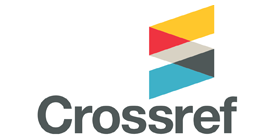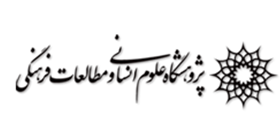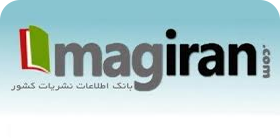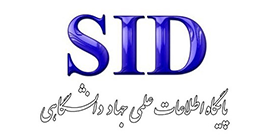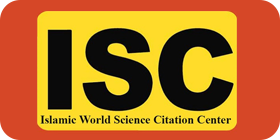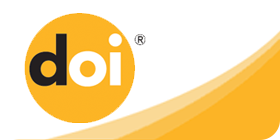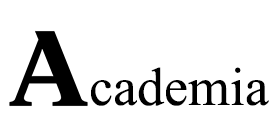Identification of Dimensions, Components, and Indicators of the Educational-Behavioral Model for Socially Vulnerable Groups
Keywords:
Behavioral education, socially vulnerable groups, working children, TehranAbstract
Purpose: This research aims to identify the dimensions, components, and indicators of the educational-behavioral model for socially vulnerable groups.
Methods and Materials: The study was applied in terms of its objective and exploratory in nature, following a qualitative approach. The statistical population consisted of academic experts and experienced officials from universities in Tehran, who were selected using a non-random purposive sampling method. The sampling method employed in this research was stratified random sampling. Data were collected through semi-structured interviews. For assessing the internal validity of the model, as well as the external validity, a researcher-designed questionnaire derived from the model's components was used. Additionally, the criterion of trustworthiness was applied, and reliability was examined by accurately documenting the research process and ensuring alignment within and between researchers. The data analysis method used was thematic analysis (including basic, organizing, and global themes) with the Maxqda-V2018 software.
Findings: The findings indicated that the educational-behavioral dimensions for socially vulnerable groups included: educational (curriculum, teaching methods, educational materials and resources, educational assessment, professional development of teachers, extracurricular activities), psychological (psychological support, psychological empowerment, mental health care, emotional support, family support), social (social support, opportunities for social participation, social awareness, enhancing social skills, promoting social solidarity, social networking), economic (job skills, entrepreneurship, local economic development, financial management education, economic empowerment), and cultural (preservation of cultural identity, cultural education, cultural communication, artistic development, protection of cultural heritage, and cultural promotion).
Conclusion: Based on the identified indicators, components, and dimensions, the educational-behavioral model for socially vulnerable groups (working children in Tehran province) was designed. Finally, the internal and external validity of the model was examined, and the findings indicated appropriate validity for the designed model. Overall, the results of this study not only contribute to improving the behavior of socially vulnerable groups but can also serve as an effective tool for enhancing the quality of behavioral education for working children. This research highlights the importance of addressing the needs and changing circumstances of working children in today’s world.
Downloads
References
Adebiyi, O. O., Olabanji, S. O., & Olaniyi, O. O. (2023). Promoting inclusive accounting education through the integration of stem principles for a diverse classroom. Asian Journal of Education and Social Studies, 49(4), 152-171. https://doi.org/10.9734/ajess/2023/v49i41196
Andalib Kouraim, M., Rafiezadeh, M., Jafari Sarizi, F., Larijani, P., Tayebi, H., & Rudgar, S. (2023). The Impact of Montessori Method Training on the Creative Thinking of Working Children in Tehran. Philosophical Approach in Schools and Organizations, 2(2), 13-27. https://civilica.com/doc/1778348/
Baradaran, F. (2021). The Effectiveness of Solution-Focused Group Therapy on Personal Growth and Psychological Security of Socially Vulnerable Individuals (Case Study: 15-18-Year-Old Girls in a Working Children's Center) Faculty of Welfare, Counseling and Psychology Department]. https://irijournals.ir/journals/06-Psychology/v9-i4-winter02/paper11.pdf
Bayat, H., Vosooghi, M., Aghajani, M., & Hossein. (2024). Sociological Causes of Individuals' Tendency Toward Voluntary Work in Charity Centers Helping Working and Street Children in Tehran. Social Welfare, 24(95). http://refahj.uswr.ac.ir/browse.php?a_code=A-10-4345-1&slc_lang=fa&sid=1
Cho, S. H., Fang, X., Tayur, S., & Xu, Y. (2019). Combating child labor: Incentives and information disclosure in global supply chains. Manufacturing & Service Operations Management, 21(3), 692-711. https://doi.org/10.1287/msom.2018.0733
Detrick, S. (2023). A Commentary on the United Nations Convention on the Rights of the Child. BRILL. https://brill.com/display/title/10630?language=en
Etezadi, N. (2020). The Effectiveness of Life Skills Training on Enhancing Self-Esteem and Reducing Bullying Among Working Children Payame Noor University, Gilan Province, Astaneh Ashrafieh Center]. https://journals.pnu.ac.ir/article_7270.html
Hanstedt, P. (2024). General education essentials: A guide for college faculty. Taylor & Francis. https://doi.org/10.4324/9781003444992
Khazaei, A. (2021). The Impact of Educational Inequality on the Phenomenon of Working Children in Iranian Provinces Ayatollah al-Uzma Boroujerdi University, Faculty of Humanities].
Primo, L., González-Hernández, J., Yang, Y., & López de Subijana, C. (2023). Predicting social skills in disadvantaged Chinese high school students through physical education. Frontiers in psychology, 14, 1149223. https://doi.org/10.3389/fpsyg.2023.1149223
Rahmani Khalili, E., Hosseini, S. M., & Baghaei Sarabi, A. (2024). Exploring the Relationship Between Social Advocacy and Social Progress (A Study Among Selected Rentier Countries in the Middle East). Social Welfare and Development Planning. https://qjsd.atu.ac.ir/article_18052.html
Shafiabadi, A., Kolaei, A., & Pourmousavi, M. (2023). Pathology of Employment Among Street Working Children in Tehran: A Grounded Theory Study. Social Welfare and Development Planning, 14(54), 1-36. https://civilica.com/doc/1685332/
Sharif, F. (2022). The Effectiveness of Solution-Focused Intervention on Problem-Solving Skills, Resilience, and Peer Relationships in Socially Vulnerable Children with Emotional-Behavioral Problems University of Tehran, Faculty of Psychology and Educational Sciences]. https://en.civilica.com/doc/1203398/
Shwedeh, F. (2024). Harnessing digital issue in adopting metaversein higher education institutions: Evidence from the United Arab Emirates. International Journal of Data and Network Science, 8(1), 489-504. https://doi.org/10.5267/j.ijdns.2023.9.007
Sovacool, B. K. (2021). When subterranean slavery supports sustainability transitions? Power, patriarchy, and child labor in artisanal Congolese cobalt mining. The Extractive Industries and Society, 8(1), 271-293. https://doi.org/10.1016/j.exis.2020.11.018
Downloads
Published
Submitted
Revised
Accepted
Issue
Section
License
Copyright (c) 2025 Mohammadreza MasoumBeigi (Author); Parinaz Banisi; Hoseinali Jahed (Author)

This work is licensed under a Creative Commons Attribution-NonCommercial 4.0 International License.




